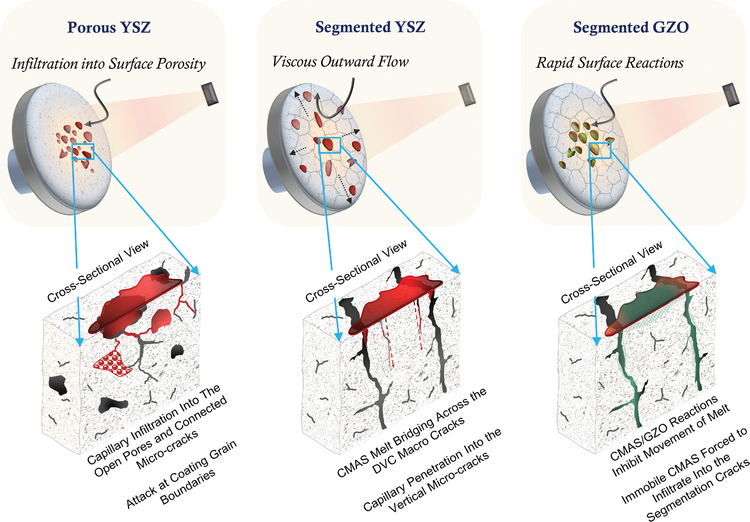Crossref Citations
This article has been cited by the following publications. This list is generated based on data provided by
Crossref.
Gildersleeve V, Edward J.
and
Sampath, Sanjay
2021.
Durability of plasma sprayed thermal barrier coatings with controlled properties part I: For planar disk substrates.
Surface and Coatings Technology,
Vol. 424,
Issue. ,
p.
127678.
Wu, Yingsang
Wang, Yao
Gildersleeve V, Edward J.
Hsu, Pei‐Feng
Sampath, Sanjay
and
McCay, Mary Helen
2022.
Laser thermal gradient testing of air plasma sprayed multilayered, multi‐material thermal barrier coatings.
International Journal of Applied Ceramic Technology,
Deng, Chen
Zheng, Runguo
Wang, Lin
Zhang, Shiyu
Lin, Xiaoping
and
Ding, Kunying
2022.
Construction of three-dimensional dynamic growth TGO (thermally grown oxide) model and stress simulation of 8YSZ thermal barrier coating.
Ceramics International,
Vol. 48,
Issue. 4,
p.
5327.
Poerschke, David L.
2022.
Developments in Thermodynamic Models of Deposit-Induced Corrosion of High-Temperature Coatings.
JOM,
Vol. 74,
Issue. 1,
p.
260.
Godbole, Eeshani P.
Hewage, Nethmi
and
Poerschke, David L.
2023.
Spreading and reaction behavior of CMAS-type silicate melts with multiphase Y and Gd aluminate-zirconate T/EBC materials.
Journal of the European Ceramic Society,
Vol. 43,
Issue. 14,
p.
6416.
Godbole, Eeshani P.
Hewage, Nethmi
von der Handt, Anette
and
Poerschke, David L.
2023.
Quantifying the efficiency of reactions between silicate melts and rare earth aluminate-zirconate T/EBC materials.
Journal of the European Ceramic Society,
Vol. 43,
Issue. 13,
p.
5626.
Gildersleeve, Edward J.
and
Vaßen, Robert
2023.
Thermally Sprayed Functional Coatings and Multilayers: A Selection of Historical Applications and Potential Pathways for Future Innovation.
Journal of Thermal Spray Technology,
Vol. 32,
Issue. 4,
p.
778.
Leng, K.
Rincon Romero, A.
and
Hussain, T.
2023.
Multilayer GZ/YSZ thermal barrier coating from suspension and solution precursor thermal spray.
Journal of the European Ceramic Society,
Vol. 43,
Issue. 11,
p.
4991.
Nair, Rakesh Bhaskaran
and
Brabazon, Dermot
2024.
Calcia magnesia alumino silicate (CMAS) corrosion attack on thermally sprayed thermal barrier coatings: a comprehensive review.
npj Materials Degradation,
Vol. 8,
Issue. 1,
Leng, K.
Romero, A. Rincon
Curry, N.
and
Hussain, T.
2024.
Multilayer GZ/YSZ thermal barrier coating from suspension and solution precursor plasma spray.
Ceramics International,
Vol. 50,
Issue. 1,
p.
631.
Kumar, Satyajeet
and
Pandey, S. M.
2024.
Phase Composition, Microstructural Characterization and Mechanical Properties of Plasma-Sprayed Samarium Niobate: A Possible Replacement of YSZ for Thermal Barrier Coating Applications.
Journal of Materials Engineering and Performance,
